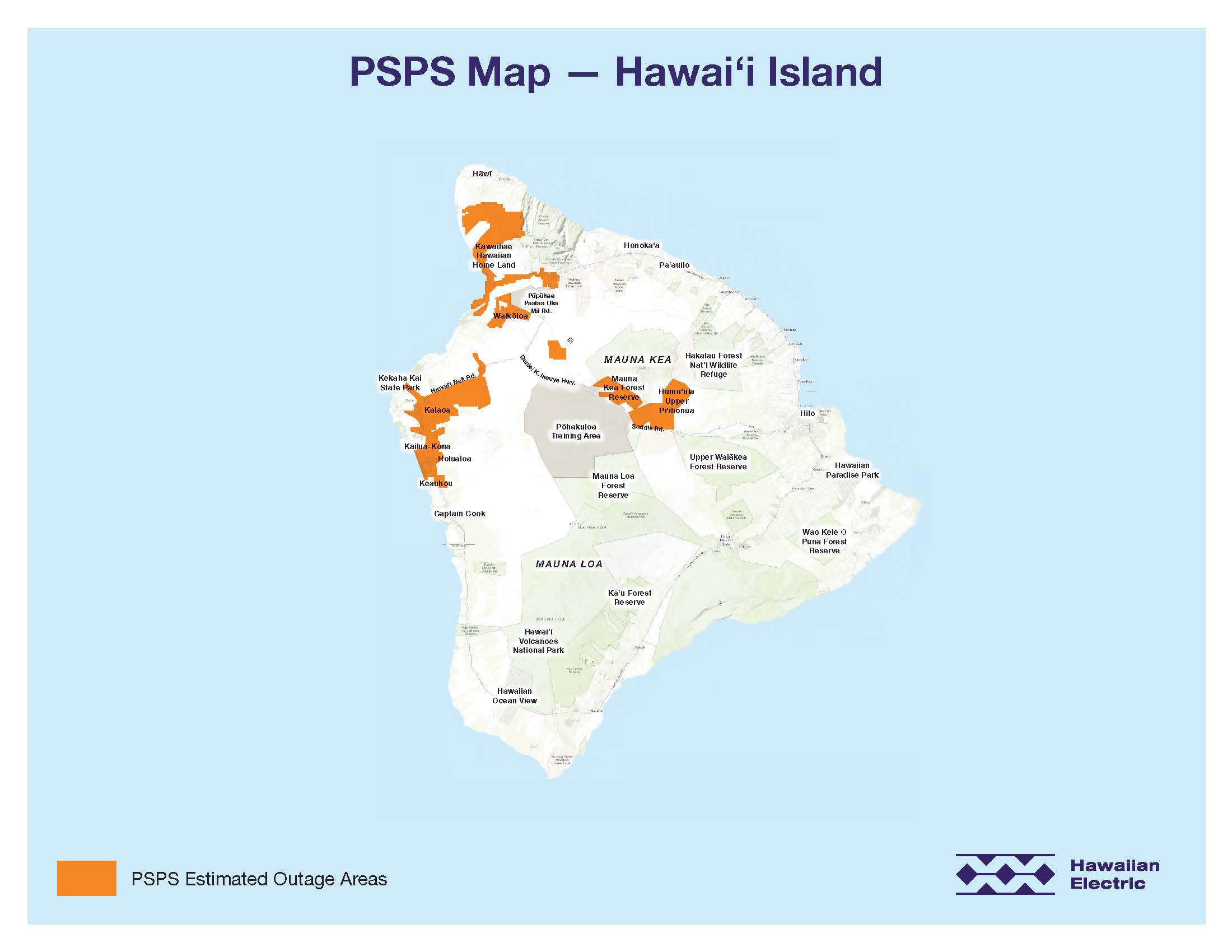The Hawaiian Electric (HECO) Public Safety Power Shutoff (PSPS) program (effective July 1, 2024) is a method of wildfire prevention that involves temporarily turning off the power with limited or no advance notification to certain high-risk areas during extreme and potentially dangerous weather conditions. Typically, those weather conditions involve strong winds, low humidity and very dry vegetation — all of which can elevate the risk of wildfire.
The decision to implement a PSPS is made by HECO, not by the Department of Water Supply or County of Hawaii, and will only be made “as a last line of defense to help protect communities,” according to the utility.
HECO – FOR MORE INFORMATION ON PSPS:
– PSPS Website: hawaiianelectric.com/psps
– PSPS Hotline: 1 (844) 483-8666 (toll free)
– HECO Customer Service:
Hilo (808) 969-6999
Kona (808) 329-3584
Waimea (808) 885-4605
Which neighborhoods are affected by a PSPS?
HECO has identified specific areas that have high wildfire risk that may be subject to a public safety power shutoff. In any of the areas in orange seen on the map (issued July 1, 2024 by HECO) below, HECO may decide to preemptively turn off the power during periods where severe weather conditions, including strong winds and dry vegetation, result in an increased risk for wildfires. A PSPS could impact the entire area or only selected segments depending on conditions.

How does a PSPS impact me?
HECO’s decision to implement a public safety power shutoff will result in the electricity being turned off for residents and businesses within certain geographic areas determined to be most at-risk. Depending on how long the dangerous weather conditions persist, a PSPS power outage may last hours to days. Keep in mind that traffic signals, grocery stores, restaurants, gas stations, banks and ATMs will most likely be affected by a PSPS. Thus, all residents are strongly encouraged to review the potential scenarios and prepare accordingly.
How does a PSPS impact the Department of Water Supply (DWS)?
DWS operations – pumping and transporting water – rely on the commercial power delivered by HECO. If and when activated, a PSPS will affect DWS operations in those areas. DWS utilizes backup generators at a limited number of well sites, but these emergency generators CANNOT fully replicate HECO’s power grid. Thus, an extended power outage or PSPS could diminish or deplete DWS’ water systems and leave customers with low pressure or no water. In order to prevent or delay this scenario from occurring, DWS will likely need to restrict or ration tap water for fire protection, drinking, cooking, and personal hygiene purposes only. Car washing, irrigation and non-essential uses of water would be suspended until all power and water systems have been returned to normal conditions.
How can I prepare for a PSPS?
DWS strongly urges its customers and those who depend on a continuous supply of DWS water to review their personal situations and prepare accordingly. Customers should have alternate sources of potable water and enough supply to meet their essential needs during a prolonged power outage that disrupts DWS service. Ways to safely store drinking water are listed in the Water Emergency Preparedness guide available under the “Community” drop-down menu option on the Department’s website, www.hawaiidws.org.
